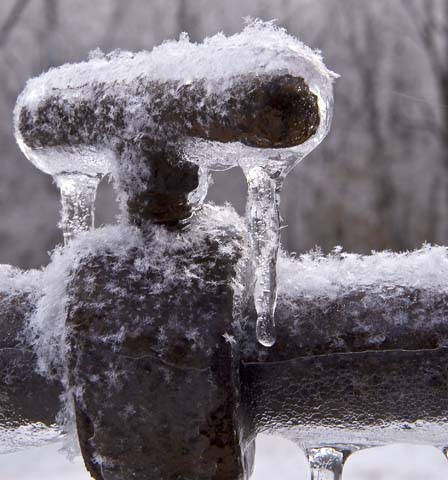Advice for Preventing Frozen Plumbing in Winter: Specialist Advice
Advice for Preventing Frozen Plumbing in Winter: Specialist Advice
Blog Article
They are making a few good annotation on Helpful Tips to Prevent Frozen Pipes this Winter as a whole in this great article just below.

Winter can ruin your plumbing, especially by freezing pipes. Right here's just how to stop it from happening and what to do if it does.
Introduction
As temperature levels decrease, the threat of icy pipelines increases, possibly causing costly fixings and water damage. Recognizing exactly how to stop frozen pipelines is essential for property owners in cool climates.
Avoidance Tips
Shielding susceptible pipelines
Cover pipes in insulation sleeves or utilize warmth tape to protect them from freezing temperature levels. Concentrate on pipes in unheated or exterior areas of the home.
Home heating strategies
Maintain indoor spaces sufficiently warmed, specifically areas with plumbing. Open cabinet doors to allow warm air to circulate around pipes under sinks.
Just how to recognize icy pipelines
Try to find lowered water circulation from faucets, unusual smells or sounds from pipelines, and visible frost on exposed pipelines.
Long-Term Solutions
Architectural modifications
Consider rerouting pipes far from outside walls or unheated locations. Add extra insulation to attic rooms, basements, and crawl spaces.
Updating insulation
Purchase top quality insulation for pipelines, attics, and walls. Correct insulation assists maintain constant temperatures and minimizes the risk of frozen pipelines.
Safeguarding Exterior Plumbing
Garden hoses and outside taps
Detach and drain yard pipes prior to winter season. Mount frost-proof spigots or cover outdoor taps with shielded caps.
Comprehending Icy Pipelines
What creates pipelines to freeze?
Pipelines ice up when revealed to temperatures listed below 32 ° F (0 ° C) for expanded durations. As water inside the pipelines freezes, it expands, putting pressure on the pipe wall surfaces and possibly creating them to burst.
Risks and damages
Frozen pipes can lead to supply of water interruptions, property damages, and pricey repairs. Burst pipelines can flooding homes and trigger substantial structural damage.
Signs of Frozen Piping
Recognizing icy pipes early can prevent them from breaking.
What to Do If Your Pipelines Freeze
Immediate activities to take
If you think icy pipelines, keep taps available to alleviate stress as the ice melts. Use a hairdryer or towels taken in warm water to thaw pipes gradually.
Conclusion
Protecting against frozen pipelines needs aggressive procedures and fast actions. By understanding the causes, signs, and safety nets, homeowners can secure their pipes during winter.
6 Proven Ways to Prevent Frozen Pipes and Protect Your Home
Disconnect and Drain Garden Hoses
Before winter arrives, start by disconnecting your garden hoses and draining any remaining water. Close the shut-off valves that supply outdoor hose bibs and leave the outdoor faucet open to allow any residual water to drain. For extra protection, consider using faucet covers throughout the colder months. It’s also important to drain water from any sprinkler supply lines following the manufacturer’s directions.
Insulate Exposed Pipes
Insulating your pipes is an effective way to prevent freezing. Pipe insulation is readily available at home improvement stores and is relatively inexpensive. Pay close attention to pipes in unheated areas such as the attic, basement, crawl spaces, or garage. Apply foam insulation generously to create a buffer against the cold. You can also wrap your pipes in heat tape or thermostat-controlled heat cables for added warmth.
Seal Air Leaks
Inspect your home for any cracks or openings that could let in cold air. Seal any holes around the piping in interior or exterior walls, as well as the sill plates where your home rests on its foundation. Additionally, make sure to keep your garage door closed unless you’re entering or exiting. Leaving it open creates a significant air leak that can lead to frozen pipes.
Allow Warm Air Circulation
During cold snaps, it’s essential to allow warm air to circulate evenly throughout your home. Leave interior doors ajar to promote better airflow. Open kitchen and bathroom cabinets to help distribute heat consistently around the rooms. If you have small children or pets, be sure to remove any household chemicals or potentially harmful cleaners from open cabinets for safety.
Let Faucets Drip
A small trickle of water can make a big difference in preventing ice formation inside your pipes. When temperatures drop significantly, start a drip of water from all faucets served by exposed pipes. This continuous flow helps prevent the water from freezing. Additionally, running a few faucets slightly can relieve pressure inside the pipes, reducing the chances of a rupture if the water inside does freeze.
https://choateshvac.com/6-proven-ways-to-prevent-frozen-pipes-and-protect-your-home/

We hope you enjoyed reading our section about Prevent Frozen Pipes . Many thanks for spending some time to read our content. Sharing is nice. You never know, you will be doing someone a favor. Many thanks for your time. Don't hesitate to pay a visit to our website back soon.
Schedule Your Job Now Report this page